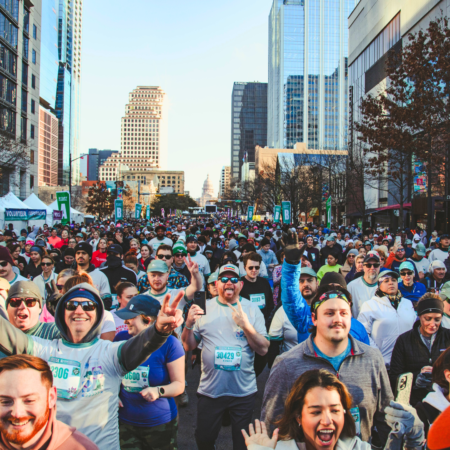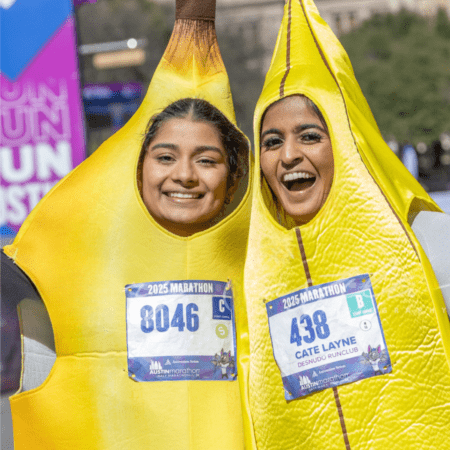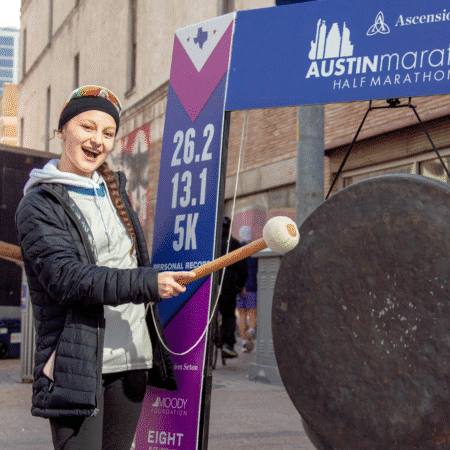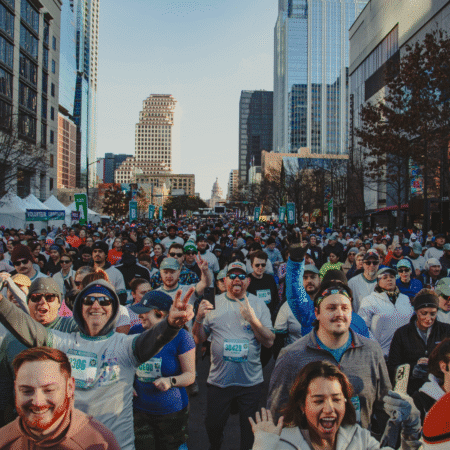Top Motivational Quotes to Keep You Running
There are days when running feels effortless, and then there are days when every step feels like a struggle. Whether you’re deep into marathon training or simply trying to get motivated to lace up your shoes, a little inspiration can go a long way.
We’ve gathered top motivational running quotes to keep your legs moving, mindset sharp, and heart focused on the finish line—especially when that finish line is the Austin Marathon.
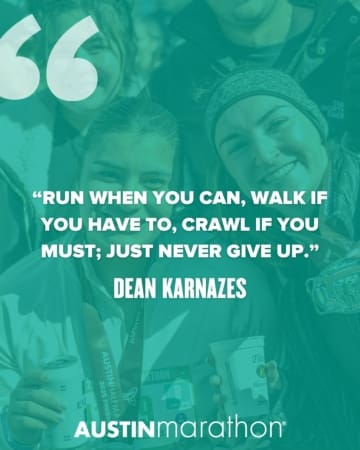
1. “Run when you can, walk if you have to, crawl if you must; just never give up.”
— Dean Karnazes
When the miles get tough, remember: forward is forward. Every step counts.
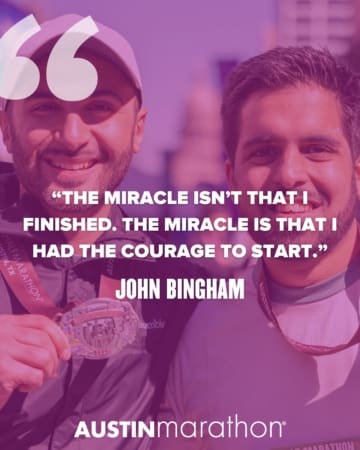
2. “The miracle isn’t that I finished. The miracle is that I had the courage to start.”
— John Bingham
Signing up for the Austin Marathon is already a win. You’ve taken the leap — now keep going.
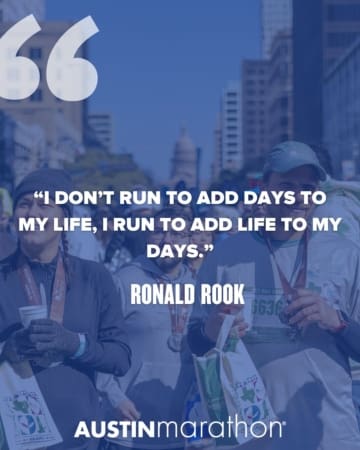
3. “I don’t run to add days to my life, I run to add life to my days.”
— Ronald Rook
Running brings joy, clarity, and confidence. Don’t forget to enjoy the ride.
 4. “Pain is temporary. Quitting lasts forever.”
4. “Pain is temporary. Quitting lasts forever.”
— Lance Armstrong
There will be hard runs and off days. Push through — because giving up never feels better.
 5. “Only the disciplined ones in life are free.”
5. “Only the disciplined ones in life are free.”
— Eliud Kipchoge
Discipline isn’t a punishment — it’s power. Every training day builds your strength and your freedom to do hard things.
 6. “Somewhere in the world someone is training when you are not. When you race him, he will win.”
6. “Somewhere in the world someone is training when you are not. When you race him, he will win.”
— Tom Fleming
Feeling sluggish? Channel this as fuel. Put in the work now so you’re ready on race day.
 7. “The body achieves what the mind believes.”
7. “The body achieves what the mind believes.”
— Napoleon Hill
Your legs can go far — but your mindset can take you farther. Believe in your ability to finish strong.
8. “Running teaches us that we are capable of so much more than we ever imagined.”
— PattiSue Plumer
Every training run proves it: you’re stronger, more resilient, and more determined than you think.
 9. “It doesn’t matter how slowly you go as long as you do not stop.”
9. “It doesn’t matter how slowly you go as long as you do not stop.”
— Confucius
Pace doesn’t define you — persistence does.
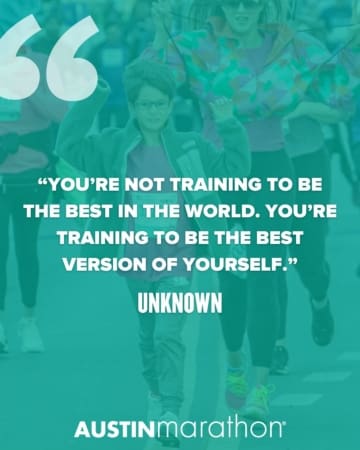
10. “You’re not training to be the best in the world. You’re training to be the best version of yourself.”
— Unknown
Comparison is the thief of joy. Your race, your goals, your journey — and that’s more than enough.
Final Thoughts
Marathon training is as much a mental game as it is a physical challenge. Bookmark these quotes, tape them to your mirror, or repeat them during tough miles. Whether you’re preparing for your first Austin Marathon or chasing a new personal best, having the right words at the right time will remind you exactly why you’re running.
You’ve got this, one mile and one mantra at a time.
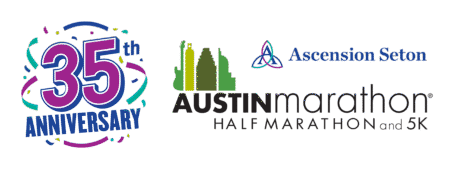
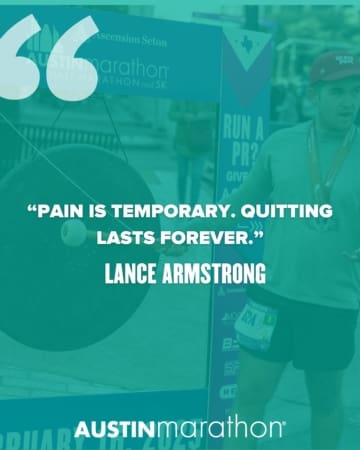 4. “Pain is temporary. Quitting lasts forever.”
4. “Pain is temporary. Quitting lasts forever.”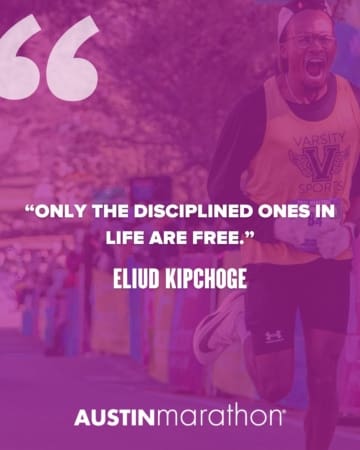 5. “Only the disciplined ones in life are free.”
5. “Only the disciplined ones in life are free.”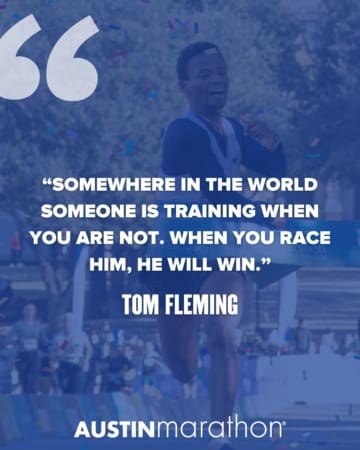 6. “Somewhere in the world someone is training when you are not. When you race him, he will win.”
6. “Somewhere in the world someone is training when you are not. When you race him, he will win.”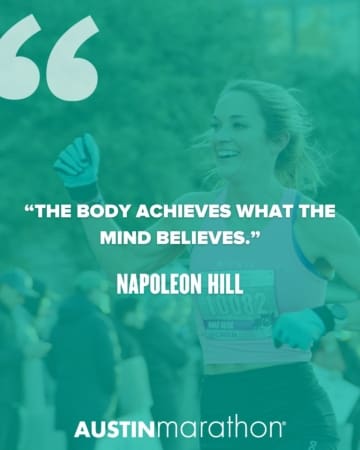 7. “The body achieves what the mind believes.”
7. “The body achieves what the mind believes.”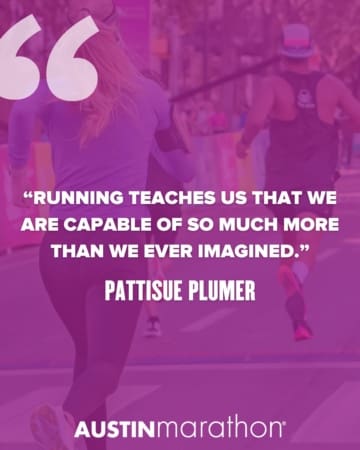
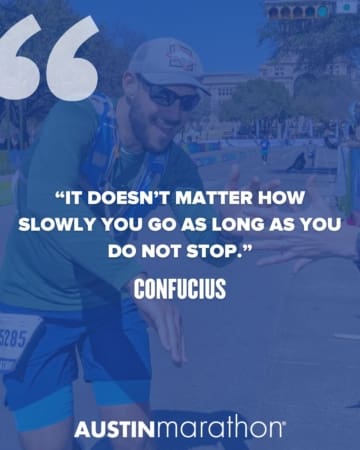 9. “It doesn’t matter how slowly you go as long as you do not stop.”
9. “It doesn’t matter how slowly you go as long as you do not stop.”